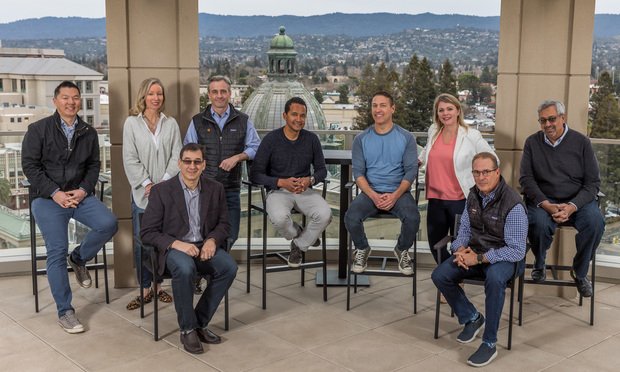Though there have been signs that the economy is slowly stumbling toward recovery, single-family housing demand and construction starts continue to struggle. Tight lending standards, combined with consumer skepticism toward the "American Dream" of homeownership, results in the obvious: Though development is increasing somewhat, we won't soon see a plethora of for-sale homes sprouting out of vacant lots as we did during the mid-2000s.
According to the National Association of Home Builders, housing starts in 2011 totaled 609,000 units, versus the 1.3 million units recorded in 2007. NAHB found that there was also a decline in new home sales between 2007 and 2011—776,000 homes were sold nationwide in 2007, but that figure dropped to 305,000 in 2011.
Anthony Souza, president of Tracy, CA-based Souza Realty & Development Inc., says things aren't likely to change in the near term, either. In a normal home building cycle, he explains, there'd be an uptick in single-family development. But the bust of the late 2000s was anything but normal. "There's still the big foreclosure overhang that hasn't been wiped out," he comments, not to mention the issue of the so-called "government twins," Fannie Mae and Freddie Mac. Furthermore, people are shackled to their homes for various reasons, mostly financial.
From a commercial real estate perspective, the question revolves around those plots of land so eagerly acquired by homebuilders less than a decade ago. It would be reasonable to assume that, in a supply-anddemand economy, developers and investors could swoop in and get some good deals on l a n d f r o m homebuilders. Municipalities, eager to attract more revenue into depleted coffers, might also be willing to help generate new uses for that now-vacant land.
But almost everyone knows the results of assumptions. Though a commercial developer might find some benefit in buying land zoned for single-family purposes, this tends to be more the exception than the norm.
"Established neighborhoods with homes and building ordinances already in place are not going to have a lot of flexibility to take down residential land and convert it to commercial uses," notes Peter Tobin, managing director with Mission Capital Advisors in New York City. "But when you look at the fringes of development, where we've seen more distressed housing and foreclosures, as well as abandoned subdivisions, those areas are open to just about anything that could boost tax revenues." But he and other experts agree that "just about anything" isn't necessarily commercial development.
The main adage of any commercial development is that retail follows rooftops. During the mid-2000s, homebuilders bought a lot of land on the fringes of metro areas, with plans to plant a lot of homes. But that land is now vacant, or worse, contains subdivisions filled with foreclosed homes. Without rooftops or people to live under them, commercial property developers aren't interested in buying the land just to have it.
"Development on the fringes —any kind of commercial development—isn't viable until the residential market picks up," Tobin comments. "Would cities be interested in developing commercial? Without a doubt. But the developer will not see any kind of opportunity to convert residential into commercial."
Tobin tells the story of 45 acres zoned for commercial use in Berthaud, CO that had originally been in the path of a planned residential development. The now-defunct New Frontier Bank of Greeley, CO, sold seven acres to Safeway for a grocery-anchored development—but it was never built. Without the anchor grocery, no additional retail was built. The residential homes that would support the commercial development were never built, either. Tobin, whose company is managing the "fire sale" of those 45 acres and similar parcels, points out that the Berthaud location was just too "out there" and will remain so for awhile. "You don't want to have a commercial space that no one will drive past on their way home," he adds.
What about office property? Unlike retail, office demand doesn't really depend on a number of rooftops. Pete O'Neil, senior research analyst with Colliers International's Phoenix office, busts this assumption by outlining the situation in the Phoenix metro area, which arguably was one of the ground zeros of the housing collapse. Though the second half of 2011 saw good absorption in all property types, including office, "vacancy levels are still elevated by historic norms," O'Neil said in a recent interview with GlobeSt.com. "There isn't a ton of demand right now for commercial space."
Though it might be assumed that land is land is land, there are differences between raw land with absolutely no infrastructure, single-family land (designed as lots) and commercially zoned land (designed for higher density and different types of use).
"There's a huge difference between lots and land," explains Grant Brodeur, a land broker and associate with Henry S. Miller Brokerage LLC in Dallas. He points out that land with infrastructure already in place is going to be more valuable than raw land. But homebuilders that might consider selling land are competing with banks that have foreclosed land on their books, and can sell that land for dirt cheap. "Buyers on the fence are willing to step up and close deals quickly under those circumstances," he says.
But those buyers may not be willing to look at land without the accompanying infrastructure. Souza explains that his company is marketing about 7,000 single lots in Central California, but they aren't getting a whole lot of interest right now because the lots don't have infrastructure. And investing in infrastructure doesn't always work either; supporting infrastructure costs can be pricey, especially when there is little demand for the land.
In a market like Central California, "you could have $100,000 in infrastructure costs, but your base land value will only be $10,000 to $20,000 per lot," Souza says. Because of the lack of single-family developments, some of these lots end up on the market for $8,000 apiece, which is great for an investor with patient money. However, Souza notes, that investor needs to hang onto that land, and pay taxes on it with little recompense or return, until the market recovers.
Furthermore, it doesn't make sense for any kind of developer, commercial or residential, to buy land just because it's there. Location once again rears its head in such situations. "If land is still vacant, it hasn't been purchased by an investor or developer because perhaps the location isn't very good," comments Jonathan S. Grebow, president and CEO of Ridgewood Real Estate Partners, based in Florham Park, NJ.
Another problem is that it might not be feasible to simply rezone the land. Stratford Land's David Moore points out that it's all but impossible to rezone any kind of residential land for industrial uses, for obvious reasons. And when it comes to land zoned for retail, there's already way too much of that. "The amount of retail we have per square foot, per person, is greater than what they have in Europe," says Moore, who oversees the company's investments in Georgia, Tennessee and the Carolinas Certainly this was headlined during the Great Recession and its aftermath: Retailer after retailer threw in the towel and either shut down or declared Chapter 11.
Aside from this, retail developers, burned in the past by the promise of an exploding number of residential rooftops that never came to fruition, are being a lot more cautious about acquiring land, even if lenders were willing to provide capital for such developments. "Developers need to see rooftops actually on the ground, and people living in those houses, before they're willing to build today," Moore says.
This is especially the case in Frisco and Plano, two high-growth cities in North Texas. Henry S. Miller's Brodeur says the four-corner retail zones so popular in these towns just a few years ago are now going into overkill mode—meaning there's a lot of vacancies. As such, he says, some of the retail in Frisco is actually being rezoned to residential purposes; a somewhat bizarre turnabout of events. In one example, a request was fielded by the Frisco Planning and Zoning Commission to rezone 27.2 acres of planned retail space on the west side of town to residential in the form of 104 "patio homes." Similar events are occurring in Plano; sites once zoned for strip center retail developments are being presented to the city council by single-family and multifamily developers.
Nor are Plano and Frisco alone in trying to scrape off excess retail zoning. Highlands Classic Homes, a Dallas-area builder of high-end single-family residences, wants to develop home lots on the site of a former Walmart store in the Lake Highlands area, approximately 10 miles northeast of the CBD. Across the country in Syracuse, NY, many old, vacant retail buildings Downtown have been renovated to residential—mainly apartments, which have been snapped up by renters. Certainly conversion of historic retail buildings to apartment lofts isn't anything new, but with the growing pool of renters coming on line and increasing demand for multifamily housing becoming the norm, look for more former—and empty—retail sites to become the focal point for future residential development.
One hugely compelling trend of this pending reversion to residential is that, according to Stratford's Moore, today's residential zoning has been for what he terms "yesterday's market." Specifically, that market involves mixed-use town centers—proposed developments of the mid-2000s that were meant to bring together pedestrian-friendly town centers with dense residential developments and townhome developments—that ended up being, in many cases, pipe dreams.
"The old joke is that to have a townhome, you have to have a town," he comments. "The town center concept works well in some areas, but not in the far-out suburbs."
Grebow agrees that town centers, while nice in concept, simply haven't worked out in reality. "Municipalities fell in love with traditional neighborhood designs," he says. "They love the towns with a great pedestrian feel, but these rarely work in most markets."
Part of the reason for this is the consumer who wants to own a residence wants a house to be a house and an urban apartment to be an urban apartment. A town home with a "town center" feel doesn't seem to be cutting it. Notes Howard Brown, a real estate attorney with West Conshohocken, PA-based Cozen O'Connor, "In consumers' vision of homeownership, everyone has their own back yard. In a traditional neighborhood design, there is no backyard." There is plenty of traffic congestion to boot, he adds.
And for the developer, the town-centerzoned concept is a lot costlier to build, because of the required amenities and infrastructure. Also, Grebow and Moore point out that lenders are not very comfortable providing capital for the town-center concept. Consumer demand and financing, in other words, mean builders are moving away from high-density residential townhomes to the original single-family residential home. "I'm talking to builders, and what they're looking for is more traditional types of neighborhoods," Moore says. "Traditional" in this sense, doesn't mean the attempted recreation of old-time neighborhoods seen in cities such as New York City or Chicago. Rather, "traditional" in this sense means standard home lots. Period.
"Builders want a standard lot," Grebow comments. "To us, that's a 5,000-square-foot parcel." These builders also want home lots that have front-loaded driveways. "The more traditional, high-density designs had alleyways in the back, just like the older neighborhoods," Grebow points out. "But that doesn't work in middle suburbia."
So while new single-family starts remain slow for now, it won't last forever. Souza and Grebow point out that pent-up demand alone will, at some point, boost single-family starts. "There will always be people out there who want to own homes," Grebow adds.
© Touchpoint Markets, All Rights Reserved. Request academic re-use from www.copyright.com. All other uses, submit a request to [email protected]. For more inforrmation visit Asset & Logo Licensing.






